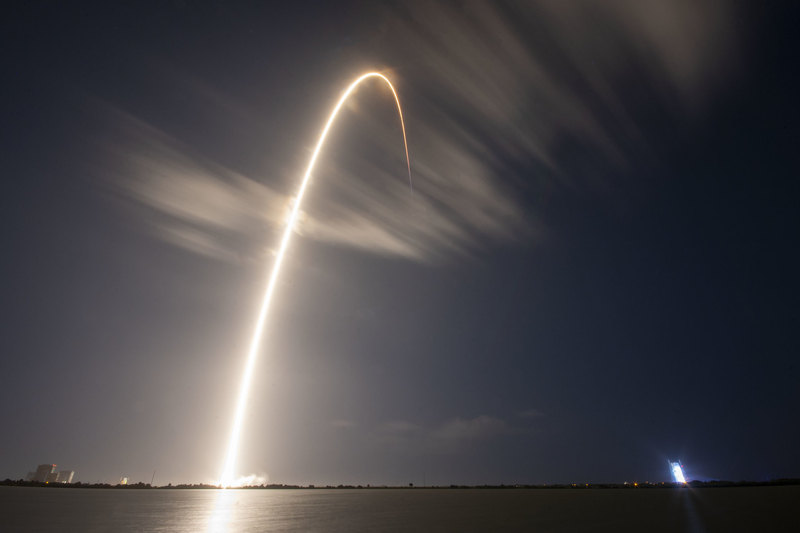Port of Long Beach to support SpaceX Pacific venture

Caption: A SpaceX spacecraft: the aerospace company will use a Port of Long Beach pier to retrieve reusable rockets. Photo Credit: SpaceX
The Port of Long Beach is to become the site for recovery of the reusable first-stages of SpaceX heavy-lift rockets. The new tenant moved into the port’s Pier T in early May.
Formerly a US Naval yard, the 6.5-acre area of the Port of Long Beach Pier T was previously occupied by a Russian space company, Sea Launch, for two decades. Under a new two-year agreement, SpaceX will lease the zone at a cost of USD107,000 per month. It will be used to dock and offload used boosters from recovery vessels, of which SpaceX currently has three: NRC Quest, GO Searcher and GO Navigator.
The rockets will launch from platforms in the Pacific and be recovered at Pier T.
“Under the terms of the lease, SpaceX accepted the site as is, and the port will not be making any physical changes to the site’s infrastructure,” a Port of Long Beach spokesperson told CEDA Industry News.
The two sea-based launch platforms – Phobos and Deimos – from which the rockets will be launched are disused oil rigs, currently being converted. They will ultimately be used to support SpaceX’s Super Heavy Lift Launch Vehicle (SHLLV) ‘Starship’ platform, which is being designed to carry a payload of 150 tonnes to orbital heights – more powerful than either America’s Saturn V or China’s Long March 9.
The port is positive about the impact on jobs the new tenant will bring to the area and told CEDA Industry News: “We know that our tenants at the port have a positive impact on the job picture in the region. We’ve studied the overall picture ourselves with an economic impact report that we released in 2019. So, we have reason to be hopeful that bringing this operation to Long Beach will enhance the economic outlook of the region.”
Opening up a new theatre of operations for SpaceX, the principle of shifting from land to sea-based launches has, since the 1960s, been regarded by the space industry as the next step in terms of scaling up launch vehicles. This principle was epitomised by the 1962 Sea Dragon design, a super-heavy-lift vehicle designed to be towed out to sea by tugs, partially submerged, and then launched directly from the sea.
SpaceX will launch its SHLLV from sea-based launch vehicles. Once the stage 1 booster has powered its payload up to orbital height, it will detach, and use a residual portion of its fuel to slow its descent and land on an autonomous spaceport droneship (ASDS), of which SpaceX has two – ‘Just Read the Instructions’ and ‘Of Course I Still Love You’, set to be joined by a third, ‘A Shortfall of Gravitas’, in the near future.
While partially reusable rockets are hardly new, SpaceX has used the technology to great effect in reducing launch costs. Other partially reusable systems include NASA’s Space Transportation System (STS) and the Soviet Union’s Buran/Energia.
While the advice given in this editorial content has been developed using the best information available, it is intended purely as guidance to be used at the user’s own risk. No responsibility is accepted by CEDA or by the Intent Communications Ltd or by any person, firm, corporation or organisation who or which has been in any way concerned with the furnishing of information or data, the compilation, publication or any translation, supply or sale of this Guidance for the accuracy of any information or advice given herein or for any omission herefrom or from any consequences whatsoever resulting directly or indirectly from compliance with or adoption of guidance contained therein even if caused by a failure to exercise reasonable care.